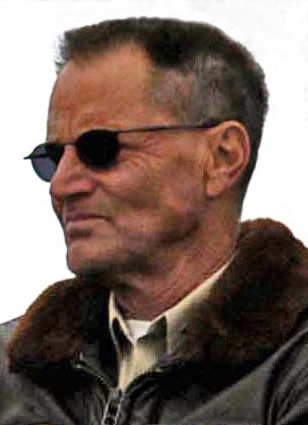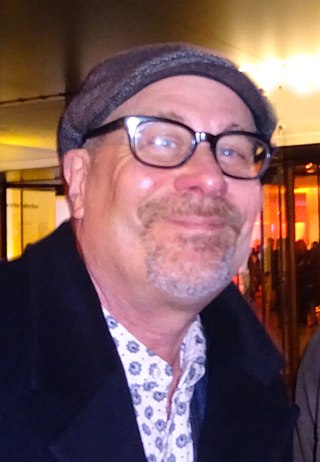Lanford Wilson was an American playwright. His work, as described by The New York Times, was "earthy, realist, greatly admired [and] widely performed." Wilson helped to advance the Off-Off-Broadway theater movement with his earliest plays, which were first produced at the Caffe Cino beginning in 1964. He was one of the first playwrights to move from Off-Off-Broadway to Off-Broadway, then Broadway and beyond.

Samuel Shepard Rogers III was an American actor, playwright, author, director and screenwriter whose career spanned half a century. He won 10 Obie Awards for writing and directing, the most by any writer or director. He wrote 58 plays as well as several books of short stories, essays, and memoirs. Shepard received the Pulitzer Prize for Drama in 1979 for his play Buried Child and was nominated for an Academy Award for Best Supporting Actor for his portrayal of pilot Chuck Yeager in the 1983 film The Right Stuff. He received the PEN/Laura Pels Theater Award as a master American dramatist in 2009. New York magazine described Shepard as "the greatest American playwright of his generation."

Stephen Rea is a Northern Irish actor of stage and screen. Born in Belfast, Northern Ireland, he began his career as a member of Dublin’s Focus Theatre, and came to the attention of film audiences as one of the close collaborators of director Neil Jordan. He is an Academy Award, Golden Globe Award and Tony Award nominee, a two-time BAFTA Award winner, and a three-time Irish Film and Television (IFTA) Award winner.

A Lie of the Mind is a play written by Sam Shepard, first staged at the off-Broadway Promenade Theater on 5 December 1985. The play was directed by Shepard himself with stars Harvey Keitel as Jake, Amanda Plummer as Beth, Aidan Quinn as Frankie, Geraldine Page as Lorraine, and Will Patton as Mike. The music was composed and played by the North Carolina bluegrass group the Red Clay Ramblers.
True West is a play by the American playwright Sam Shepard, which follows the sibling rivalry between estranged brothers Austin and Lee, who have reconnected. It is set in California, about 20 miles outside of Los Angeles in the foothills of the San Gabriel Valley, at their mother's home.

Amy Marie Madigan is an American actress. She was nominated for the Academy Award for Best Supporting Actress for the 1985 film Twice in a Lifetime. Her other film credits include Love Child (1982), Places in the Heart (1984), Field of Dreams (1989), Uncle Buck (1989), The Dark Half (1993), Pollock (2000), and Gone Baby Gone (2007).

Samuel S. Shubert was an American producer and theatre owner/operator. He was the middle son in the Shubert family and was raised in Syracuse, New York.
James Richard Gammon was an American actor, known for playing grizzled "good ol' boy" types in numerous films and television series. Gammon portrayed Lou Brown, the manager in the movies Major League and Major League II, fictionalized versions of the Cleveland Indians. He was also known for his role as the retired longshoreman Nick Bridges on the CBS television crime drama Nash Bridges.

Terry Kinney is an American actor and theater director, and a founding member of the Steppenwolf Theatre Company, with Gary Sinise and Jeff Perry. Kinney is best known for his role as Tim McManus on HBO's prison drama Oz.

Awake and Sing! is a drama play written by American playwright Clifford Odets. The play was initially produced by The Group Theatre in 1935.

The Homecoming is a two-act play written in 1964 by Harold Pinter and first published in 1965. Its premières in London (1965) and New York (1967) were both directed by Sir Peter Hall. The original Broadway production won the 1967 Tony Award for Best Play. Its 40th-anniversary Broadway production at the Cort Theatre was nominated for a 2008 Tony Award for "Best Revival of a Play".
Curse of the Starving Class is a play by Sam Shepard, considered the first of a series on family tragedies. Some critics consider it part of a Family Trilogy that includes Buried Child (1979) and True West (1980). Others consider it part of a quintet that includes Fool for Love (1983) and A Lie of the Mind (1985). The play was commissioned by Joseph Papp and premiered in London in 1977 before playing at Papp's New York Shakespeare Festival in 1978.
Cowboy Mouth is a one-act theatrical play originally produced in 1971 by Sam Shepard and Patti Smith.
Fool for Love is a play written by American playwright and actor Sam Shepard. The play focuses on May and Eddie, former lovers who have met again in a motel in the desert. The play premiered in 1983 at the Magic Theatre in San Francisco, where Shepard was the playwright-in-residence. The play was a finalist for the 1984 Pulitzer Prize for Drama.

Lois Arlene Smith is an American character actress whose career spans eight decades. She made her film debut in the 1955 drama film East of Eden, and later played supporting roles in a number of movies, including Five Easy Pieces (1970), Resurrection (1980), Fatal Attraction (1987), Fried Green Tomatoes (1991), Falling Down (1993), How to Make an American Quilt (1995), Dead Man Walking (1995), Twister (1996), Minority Report (2002), The Nice Guys (2016), Lady Bird (2017), and The French Dispatch (2021).

Jay Olcutt Sanders is an American film, theatre and television actor and playwright. He frequently appears in plays off-Broadway at The Public Theatre.

The Magic Theatre is a theatre company founded in 1967, presently based at the historic Fort Mason Center on San Francisco's northern waterfront. The Magic Theatre is well known and respected for its singular focus on the development and production of new plays. Sean San José is the Artistic Director.
Christopher McCann is an American theater, film and television actor. He was nominated for a Drama Desk Award and won an Obie Award for his performance in the 1993 play The Lights, written by Howard Korder.
Imitation of Christ is a film shot and directed by Andy Warhol in 1967.










